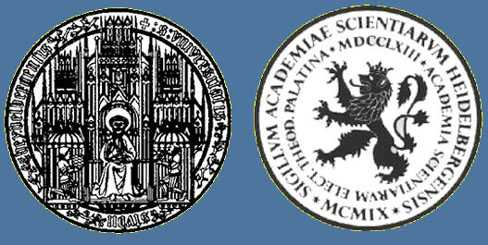Texte der DDbDP papyri.info Infofenster für digitale Inhalte wieder einblenden
⟦ ̣⟧ μηνὸς Καισαρείου κθ ἐν Καρ(ανίδι).
\⟦ ̣ ̣ ̣ ̣⟧/ ὁμολ(ογεῖ) Ταπεθεῦς Πασοκνοπαίου
τοῦ Διδυμίωνος Σαμβαθίῳ
5Ἡρᾶτος μετὰ κυρίου τοῦ ἀνδρὸς Πε-
κμήιτος τοῦ Φαήσ̣ε̣ω̣(ς) χρῆσιν ἔντο-
κον ἀργ(υρίου) (δραχμὰς) τπβ κα[ὶ] ἀντὶ τῶν
τούτων τόκων συγχωρεῖ καρπ(ίζεσθαι)
τὴ(ν) Σαμβάθιον περὶ Ψεναρψενῆσιν
10ἐλαιῶνος (ἀρούρης) δ´ μέχρει(*) οὗ ἀποδῦ(*) τὸ
προκείμενον κεφάλαιον.
καὶ διὰ τοῦ προτέρου γράπτου τοῦ γενομένου
ὑπὸ̣ Κόμωνος Πασοκνοπ(αίου) τῇ Ταπεθεῖ
Πασοκνοπαίο(υ) (ἔτους) ζ Τραιανοῦ Ἁδριανοῦ
15Καίσαρος τοῦ κυρίου Τῦβι δ.
Notes
- 2.
κθ is preferred to κε because of the clear crossbar that starts near the right side of kappa, is lost in the middle of the letter because of abrasion, and then continues to the right. The crossbars of the writer's thetas habitually extend beyond both sides of the letter (e.g., Ταπεθεῦς, l. 3, just below).
- 6.
Φαήσ̣ε̣ω̣(ς). The ed. pr.'s rho does not seem likely because elsewhere the tail of rho comes straight down or has a slight hook (although cf. Τραιανοῦ, l. 14), and because the ligature to the next letter seems to come from high on the letter, which is unlikely for rho, but fits sigma (cf. Σαμβαθίῳ l. 4). After the sigma I see the peak of a very cursive epsilon and omega, raised in abbreviation. There is also a prosopographical argument for this reading of the patronymic. In the Karanis Tax Rolls, we find a Phaesis, son of Pekmeis alias Heuremon and Sambathion (P.Mich. 4.2, p. 244; cf. BGU 15 2498 [143/144?] and l. 9 n.). The Pekmeis here is said to be acting as kyrios for his wife Sambathion; one thus suspects that they were the parents of the Phaesis from the Tax Rolls, who would have been named after his paternal grandfather.

